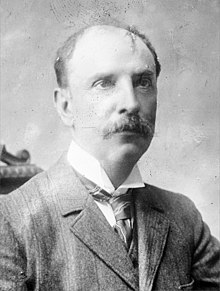Ricardo Jiménez Oreamuno
This article needs additional citations for verification. (September 2014) |
Romualdo Ricardo Jiménez Oreamuno | |
|---|---|
 | |
| 19th President of Costa Rica | |
| In office 8 May 1910 – 8 May 1914 | |
| Preceded by | Cleto González (first term) |
| Succeeded by | Alfredo González Flores |
| 25th President of Costa Rica | |
| In office 8 May 1924 – 8 May 1928 | |
| Preceded by | Julio Acosta García |
| Succeeded by | Cleto González Víquez (second term) |
| 27th President of Costa Rica | |
| In office 8 May 1932 – 8 May 1936 | |
| Preceded by | Cleto González Víquez (second term) |
| Succeeded by | León Cortés Castro |
| Personal details | |
| Born | February 6, 1859 Cartago, Costa Rica |
| Died | January 4, 1945 (aged 85) San José, Costa Rica |
| Political party | Republican Party |
| Spouse(s) | Beatriz Zamora López María Eugenia Calvo Badia |
Romualdo Ricardo Jiménez Oreamuno (February 6, 1859 – January 4, 1945) served as president of Costa Rica on three separate occasions: 1910 to 1914, 1924 to 1928, and 1932 to 1936.
He was one of the best known lawyers in Costa Rican history and a University of Santo Tomás graduate. Shortly after assuming power in 1910, the province of Cartago was hit by a powerful earthquake which destroyed most of the city and killed hundreds. One of his main struggles was the rebuilding of the biggest city in the country at the time. After the earthquake, Jiménez outlawed construction with adobe.[1] Another notable aspect of his first term was the consolidation of the country's external debt with a great part of the debt owed to France being repaid.
During his second term in office, he created the National Insurance Bank, The Bank of Mortgage Credit, the School of Agriculture and founded the Ministry of Health. He also began the electrification of the Pacific railway system and the creation of the Pacific port of Puntarenas. After his second term he stepped away from the political scene for four years.
He again was elected President in 1932. During his last term in office he concentrated on the country's infrastructure and educational system. He built several large buildings for school housing, improved and build new roads throughout the country and constructed an aqueduct system that started in the central valley at Ojo de Agua and flowed into the Pacific Ocean at Puntarenas.[1] During his administration, the bridge from Filadelfia and Liberia was constructed, as was the Old National Theater.
He died in San José on 4 January 1945.[1]
His father was two-time president Jesús Jiménez.
References
